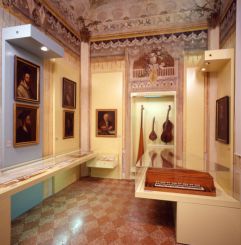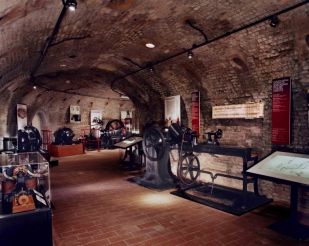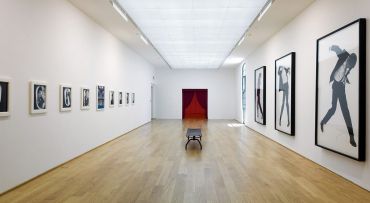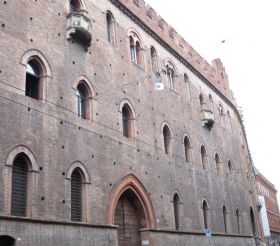International Museum and Library of Music, Bologna
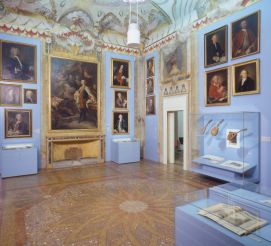
The International Museum and Library of Music (Museo Internazionale e Biblioteca della Musica) boasts the greatest bibliographic and musical heritage of Bologna. The idea to create such cultural space was born through a desire to introduce the rich history of the city which is closely intertwined with music to the general public. Many consider this museum one of the best in Europe. It is located in the old noble Palazzo Sanguinetti.
History of the museum
The palazzo was built in the early 16th century and originally belonged to the Loiani family. In 1569, it was sold to Senator Ercole Riario. Over time, he redesigned his dwelling according to new fashion trends. On March 2, 1796, the palace was leased to Count Antonio Aldini. At his request, the place underwent a significant renovation, the interior has become truly luxurious, it was decorated with works of the best artists. In 1832, the palace came into ownership of the Italian opera singer Domenico Donzelli, and in 1870 it became the property of the Sanguinetti family. The last owners were the ones who made final interior changes. In 1986, the last heiress of the family, Eleonora Sanguinetti, donated most of the mansion to the Bologna’s municipality.
The Museum of Music itself was opened by the city authorities in 1959. A rich book collection by the world-famous Bologna composer Giovanni Battista Martini was the. A huge collection that includes 17,000 volumes was brought from the former Monastery of San Giacomo. After the acquisition, Palazzo Sanguinetti was renovated according to newly emerged requirements, and in 2004 the museum and library fully occupied the new place.
Tour through the museum
After the palace was restored, visitors finally could enjoy the magnificent creations of artists from the 18th and 19th centuries, such as paintings, frescoes, and ornaments with various themes which are put on display in all 9 halls. The first room is a somewhat a preparation, the second and the third are devoted to the ideological inspirer of the museum – Giovanni Battista Martini. There are different portraits, paintings and composer’s correspondence with other musical figures of the time. The following rooms are devoted to music theorists, documentation and instruments of the 16th century. The sixth through ninth halls are dedicated to famous Bologna singers, composers and musicians of the 19th and 20th centuries. The museum also offers a lot of information on the development of the Italian opera.
Museum exhibition
The diverse museum collection is structurally and thematically divided into several separate collections.
- Art gallery. Its base was created by Giovanni Martini as a visual addition to his book collection. There are portraits of composers, theorists, singers, and musicians, as well as the main representatives of the 18th-century musical life. In total, the collection includes 319 paintings, mostly oil on canvas ones, as well as several pastels and drawings.
- Musical works. These are mostly old, often even the first works that date back to the 15th–18th centuries. The valuable copies are “Harmonice Musices Odhecaton” of 1501 and the manuscript of the famous Rossini's opera “The Barber of Seville” from 1773.
- Book collection. This is one of the most prestigious book collections in the world on the history of music from the 14th and 19th centuries. The collection has been growing significantly in quantity and quality past 200 years.
- Musical instruments. This rich collection comprises more than 4 centuries of history covering the period from the Renaissance until the 19th century. Its core was the collection of instruments (53 exhibits) brought together by the Bologna School of Music founded in 1804. Nowadays the most important and valuable pieces from the developed collection are put on display inside the building.
An interesting final point of the museum is the violin laboratory of Otello Bignami. This is a fully restored workshop of a famous violin manufacturer who lived in Bologna in the 20th century. It is fully functional and has all the equipment, forms, colors, working tools that the master used.
Library
The collection that was inherited from Padre Martini is considered one of the most prestigious collections for the repertoire of printed music of the 16th–18th centuries. It contains incunabula, precious manuscripts, opera librettos (about 11,000 copies), a unique collection of autographs and letters (about 8,000 pieces), the result of the correspondence that Martini constantly conducted with famous personalities, scientists and musicians of the time. After the maestro’s death, his students preserved and enlarged the collection, carefully preserving it throughout the years. It was kept in the music school that was founded in 1804 and then turned into a lyceum and later – into the conservatory.
After World War II, the municipality of Bologna created this museum to preserve the valuable heritage. Today the library has around 100,000 bibliographic units and is one of the first music libraries in the world. It offers visitors microfilms, slides and photographs, consultations and help with studies.
How to get
The museum is located in the historic center of Bologna, on Str. Maggiore, 34. The heart of the city, Piazza Maggiore and the Two Towers, are 5–10 minutes away from here. The Davia Bargelini Museum can be found nearby. Opposite to the palazzo, there is the Strada Maggiore bus stop (buses 14, 19, 25, 27, 62).
Opening hours: the museum is open from Tuesday to Friday from 09:30 to 16:00, on weekends from 10:00 to 18:30. The library is open from Tuesday to Friday from 09:30 to 16:00. Closed on Sunday and Monday. Contact number for inquiries: (+39) 051 275 7711.
Admission: a full ticket costs 5 euros, the reduced one – 3 euros. The latter can be purchased by persons aged 18–25 and over 65, as well as by groups of over 10 people. People under 18 are free of charge. The entry is free on the first Sunday of the month. The information about admission and opening hours may be changed.



